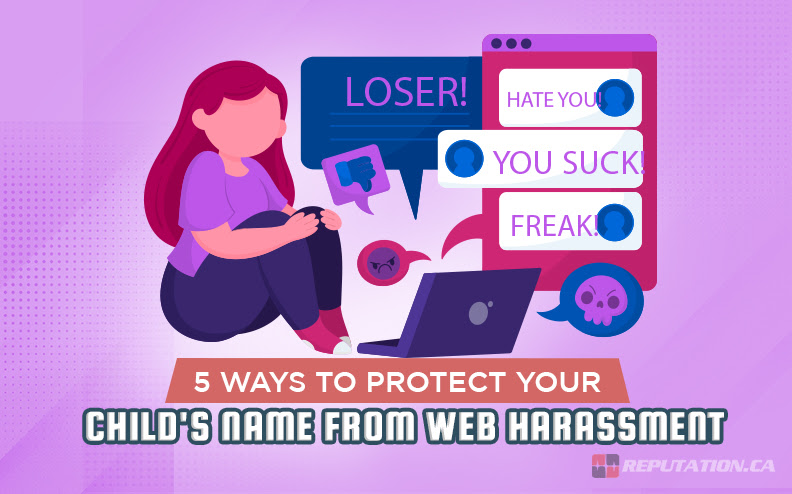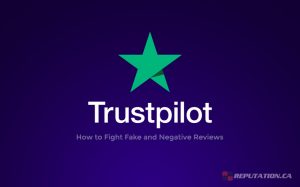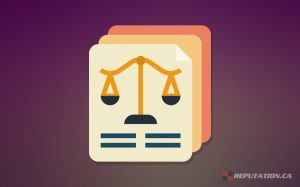The truth is that your child’s online footprint can follow them for decades, with over half of teens facing cyberbullying now. Web harassment has changed quickly with all these new sites and apps that make it easier for bullies to target children’s names and personal information. You want to step in early because once harassment starts, it’s much harder to make it stop.
The great news is that online privacy starts with just a few steps. When your child uses their real name, it connects every single post and photo to their identity. This creates permanent records that colleges and employers can find years later.
Let me share some simple strategies you can start right now to protect your child’s online identity. These work without you having to hover over their shoulder. And with the right tools and knowledge, you can reduce these dangers without becoming an overbearing parent.
The first step is to help your child create anonymous usernames that still let them express their personality online.
How Anonymous Names Protect Your Child
You’ll find that most children want to use their real names online because it feels more genuine to them. They really want that real connection with friends, and they want others to know exactly who they are. This desire makes perfect sense – we all want to be known and recognized. But here’s the problem – it also creates the biggest danger for harassment.
Once bullies find out someone’s real name, the harassment gets much more personal and hurtful. They can follow your child across different sites and apps. They might even get in touch with other students from school or contact family members. When you use real names, it turns online bullying into something that never stops. You might find that your child’s phone buzzes with cruel messages during family dinner. Their social media might get flooded with comments from fake accounts. What started out as playground teasing now comes into every safe space they once had.
Many parents worry that anonymous usernames teach children to be dishonest. But there’s actually a big difference between lying and keeping your privacy safe. Anonymous usernames are really about staying safe while they help others or have fun online.

You can help your child come up with usernames that show their personality without showing who they are. Maybe they love basketball and purple colors – they could become “PurpleHoops47” instead of “SarahJohnson2011.” The whole process of creating these names can be fun for kids. But stay away from birth years, hometown references, or school names in any username. Even details that seem harmless can give bullies more ways to hurt your child.
This way, you let them be themselves online without handing harassers a roadmap to cause real damage in their offline world.
Privacy Skills for Your Kids
Teaching kids about online privacy has become just as essential as teaching them to look both ways before they cross the street. The internet never forgets, and your child needs to understand this early on.
Let’s talk about how personal information slips out when kids are online. Your daughter might post a school project about her neighborhood on a class website. Your son adds location tags to his photos without thinking twice about it. Maybe your child mentions their school mascot or local restaurant while they’re chatting with friends during an online game. Every kid does this without giving it a second thought.
Each bit of information seems harmless on its own. But people with bad intentions know how to connect these dots. They can build a whole picture of your child’s day-to-day life just by putting together these scattered bits from different websites and social media posts. This kind of data collection happens way faster than most parents realize. Strangers can map out your child’s entire world when they use these scattered online clues. The information your family thinks is private turns into public property once it hits the internet.

The way kids love to get attention online makes this problem even worse. They get such a rush from all the likes and comments on their posts. They want to fit in with their friends online. Most of the time, they’re posting content because they want their friends to connect with them.
What your child posts now might disappear from their account tomorrow. But remember – screenshots last forever. Other people can save and share that information long after your child thinks they’ve deleted it. That’s why you and your child need to think about every post and comment before it goes live. The online mistakes kids make can follow them into their adult years. College admissions officers and future employers look at social media profiles all the time. A single thoughtless post can hurt opportunities your child hasn’t even dreamed of yet.
Track Your Child’s Online Presence Daily
When searching for a child online, it’s best to put their full name in quotation marks to help find exact matches. Be sure to check image searches separately because photos will sometimes show up even when standard text searches come back clean. Many people skip the visual search step without realizing what they could be missing. Every social media platform has its own search features built in. Facebook might not show anything that shows up on Instagram or TikTok. Each one needs its own check because these sites don’t share information with one another. A child might not show up at all on Twitter while they have tons of activity on Discord. If even one platform gets missed, real problems could slip through and come back to haunt them months down the road.
Google Alerts can definitely help anyone stay on top of new content without having to search manually all the time. Alerts can be set up for your child’s name and any other names they might use online. The goal is to catch problems before they turn into anything worse. The alerts show up in your email within a few hours after new content goes online.

If any content comes up that causes concern, screenshots need to be taken immediately. The internet changes so fast that a harmful post might disappear before there’s a chance to prove it was ever there. Document everything and include the dates and web links. Online evidence has a way of disappearing without any warning when people delete their accounts or remove their posts. These screenshots might be the only proof that harmful content was ever posted. Courts and school administrators are going to need this kind of proof if they’re going to take action to help the child.
All sites have some way to report harassment or ask for content to be taken down. The process is different on each site. Sometimes, just sending a basic email to whoever runs the website can fix everything faster than going through formal complaint channels. Some sites respond fast while others take their sweet time.
A child’s online reputation actually starts much earlier than most parents think. College admissions officers and the people who might hire them one day search for applicants online all the time. Anything that seems harmless today might look very different in five years when that teenager is trying to get their first job. This online trail is going to follow them through every big milestone in their life. Just one embarrassing post from when they were in middle school could ruin their opportunities at earning scholarships or landing job interviews. Data broker sites are always collecting information about children, and most parents have no idea it’s even happening. These businesses pull together information from public records and social media so they can create profiles to sell to marketing firms. This data collection goes on automatically across hundreds of different sites.
Privacy and Safety Tools for Your Child
Privacy settings on social media sites aren’t designed to protect your child right out of the box. These apps need to balance user safety with what they actually want – to get as many people as possible on their services sharing data. That’s why, when you first create an account, you’ll see that most of the settings are open and push kids to share and connect with others.
The hard part is that these settings don’t stay the same. What was set up last month to protect a child’s information might not even be there now. Sites roll out new features and change their policies all the time. So, checking these settings every month becomes necessary. You can’t just set them up once and forget about them.
Every platform handles privacy in its own way, too. Instagram will let you approve each person who wants to follow your child one by one. But TikTok mainly controls who can see the videos posted. Discord works completely differently, with separate permissions for each server joined. Learning one platform doesn’t mean knowing them all. Each one needs its own approach.
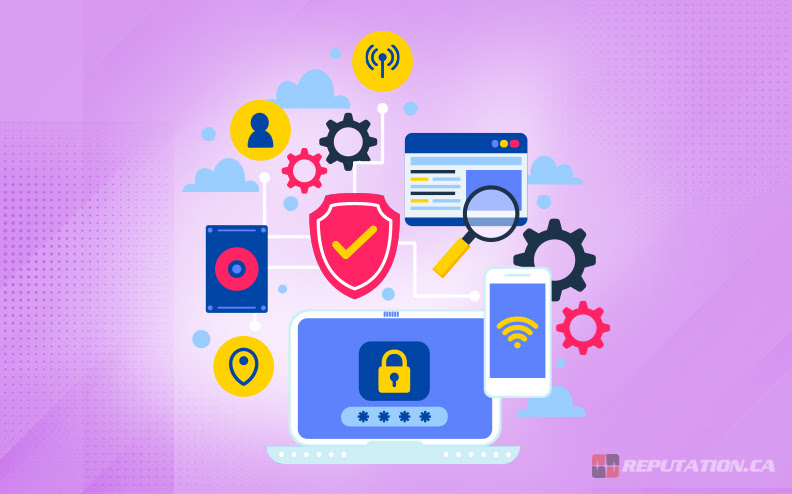
Most kids don’t want to report when someone is bothering them online because they’re afraid their parents will take away their accounts or that the person bothering them will just get worse. Many kids also don’t know that the report buttons actually do something – these sites do look at the reports. If kids learn how to use these tools before anything bad happens, they’ll be more comfortable with them and probably more likely to tell someone when they run into problems.
Teaching kids to use the reporting tools gives them a way to take charge of what happens to them online. Most sites will look at reports about someone bothering kids within 24 hours, and people who keep doing it can lose their accounts.
The challenge is not going too far with privacy controls. Locking everything down too tightly might mean missing out on making friends and being part of groups that could actually help them. When kids get cut off completely from everyone online, they end up feeling left out of what their friends are doing and the online spaces that matter to kids their age.
Talk With Your Kids About Online Problems
Most parents worry that they’re not tech-savvy enough to help their children when problems come up online. Parents don’t need to learn every single platform to keep their child safe. What matters most is making sure children feel comfortable coming to their parents when something bad happens online.
This matters much more than learning how to use every app out there. When children feel like they’ll get judged or punished for what happens to them online, they start hiding problems from their parents. The way parents respond the first time a child shares a problem will affect whether that child comes back for help later on. The old “stranger danger” lessons we all learned don’t work well online because most of the bullying and mean behavior comes from kids at school or people children already know. Most kids have probably met these people in real life, so when parents tell them to stay away from strangers, it doesn’t help with the actual problems they run into. Instead, parents need to teach them how to spot when someone they know starts being mean or creepy online.
This takes a different way of thinking about safety than what most of us grew up with. Much of online bullying actually starts with friends who slowly start crossing lines and become meaner over time. Parents should watch for small changes in how their child acts around devices. Kids might start closing their laptops really fast when someone walks into the room, or maybe they delete their social media accounts without explaining why. When their mood changes after they’ve been on their phone or computer, that’s usually a sign that something’s wrong. Kids usually show these signs before they actually tell anyone what’s going on.
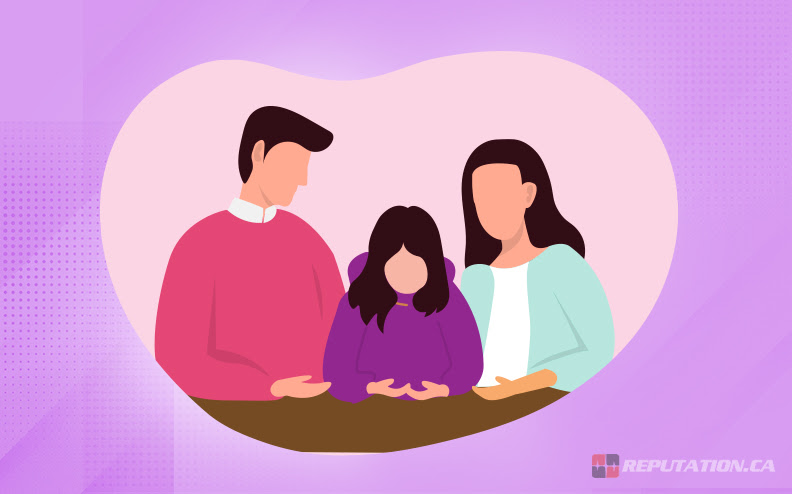
Once kids start hiding what they do on their devices, problems can get worse pretty fast. A child who used to share everything on their phone might suddenly never let anyone see their screen anymore. When parents need to talk to their child about something happening online, it’s important that the child doesn’t feel like they’re in big trouble. Ask general questions about what’s going on online instead of demanding exact details. If a child does share a problem, don’t immediately take their phone or computer away. If that happens, they’ll just learn to hide problems next time instead of asking for help.
A helpful way to learn about new apps and sites is to ask children to show you how they work. Most kids actually like showing their parents what they know about technology, and learning together like this builds trust. It also helps parents stay up to date without having to figure everything out alone.
Build Your Family’s Online Safety
The internet keeps changing way faster than most parents can keep up with, and this makes it more essential than ever to build a strong foundation of protection for kids. New apps come out every week, while privacy laws change all the time. Instead of trying everything at once, parents can begin with just one or two methods that feel most manageable for their family. Maybe that means sitting down for a conversation about online footprints first, or taking some time to set up better privacy controls on the sites their child already uses. The key is creating a system where anonymous identities, privacy practices, active oversight, platform protections, and open communication all work together as layers of protection instead of separate pieces.
When starting small, families won’t feel overwhelmed, and they’ll still build real protection. Each layer added makes the others stronger, which gives children better coverage in their online lives. Children will see that their safety is taken seriously without making technology a source of conflict.
Perfect protection online will never exist. But parents can certainly lower the dangers their children face, and that’s doable. There’s no need to become an online detective who watches every move, and there’s no need to ban technology completely either. Most families find that a middle ground tends to work best. Parents can build an environment where children understand why they need to protect their personal information, know how to use privacy tools properly, and feel comfortable speaking up when something goes wrong.
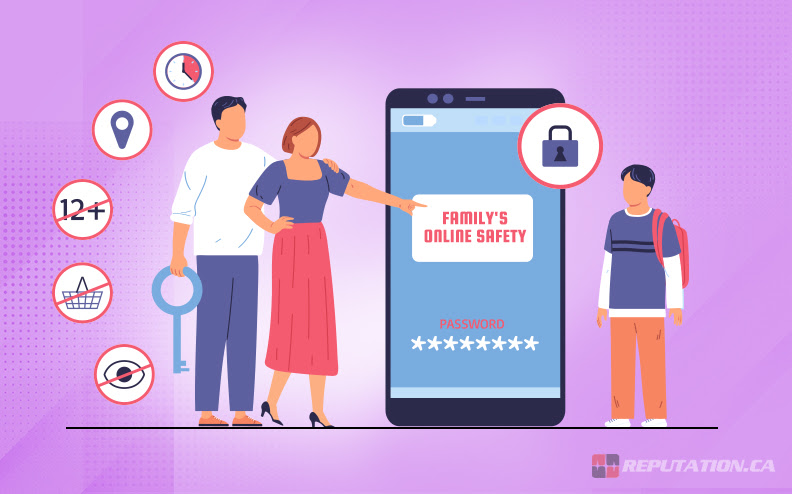
The focus should be on creating a family culture where online safety is part of everyday life. Children will make mistakes, run into unexpected situations, and probably face some form of online conflict at some point. Online conflicts usually hit children harder than most parents expect. When these moments come up, the foundation of protection strategies and open communication that’s been built will make all the difference in how fast and well everyone can respond together.
Speaking of which, if families are trying to manage their online reputation and safety, new sites and threats seem to show up all the time. At Reputation.ca, we’re Canada’s leading experts who manage reviews, social media, public relations, and crisis response.
If help is needed in dealing with cancel culture or building a stronger web presence, we’re here to help. Contact us at Reputation.ca for expert support!
